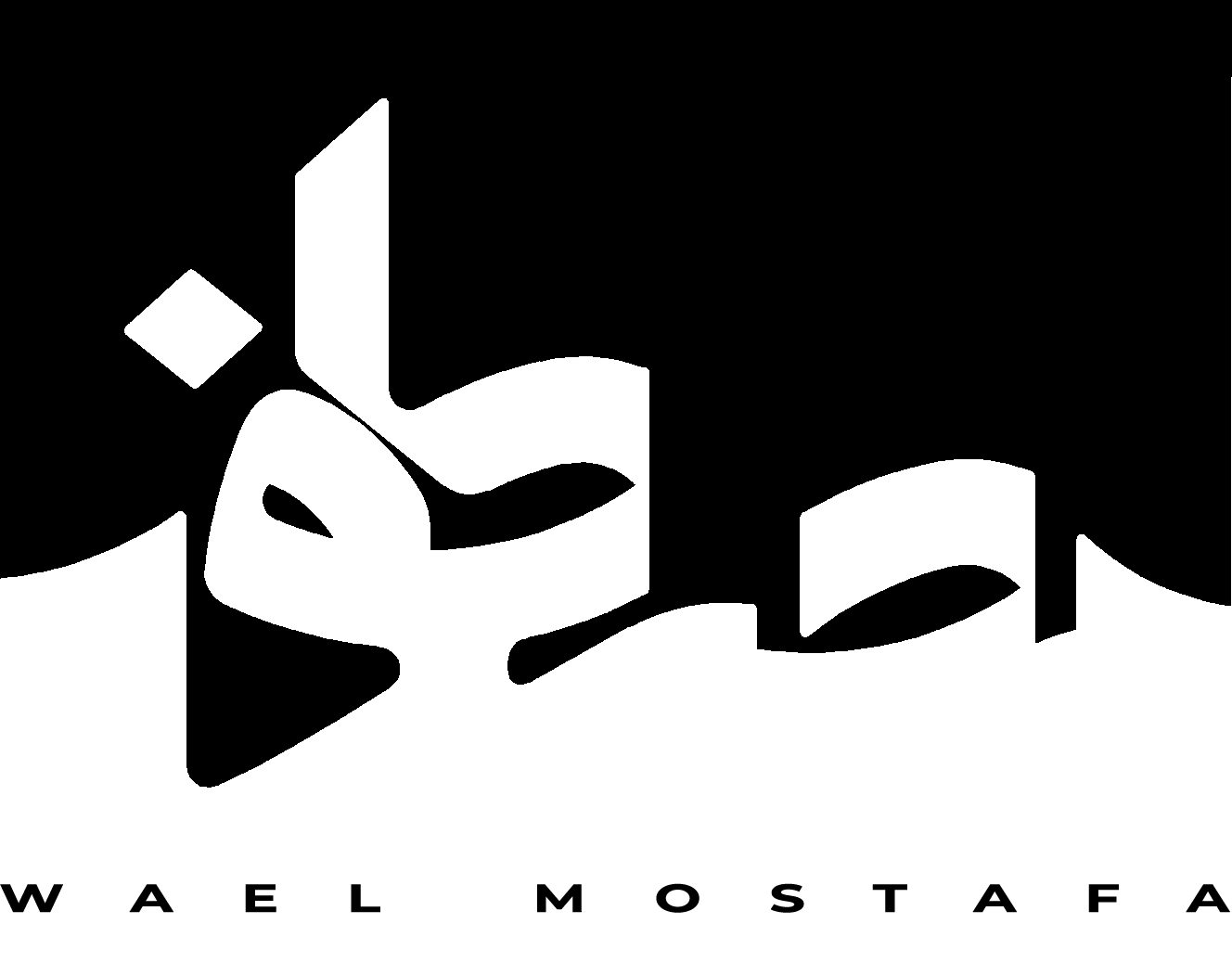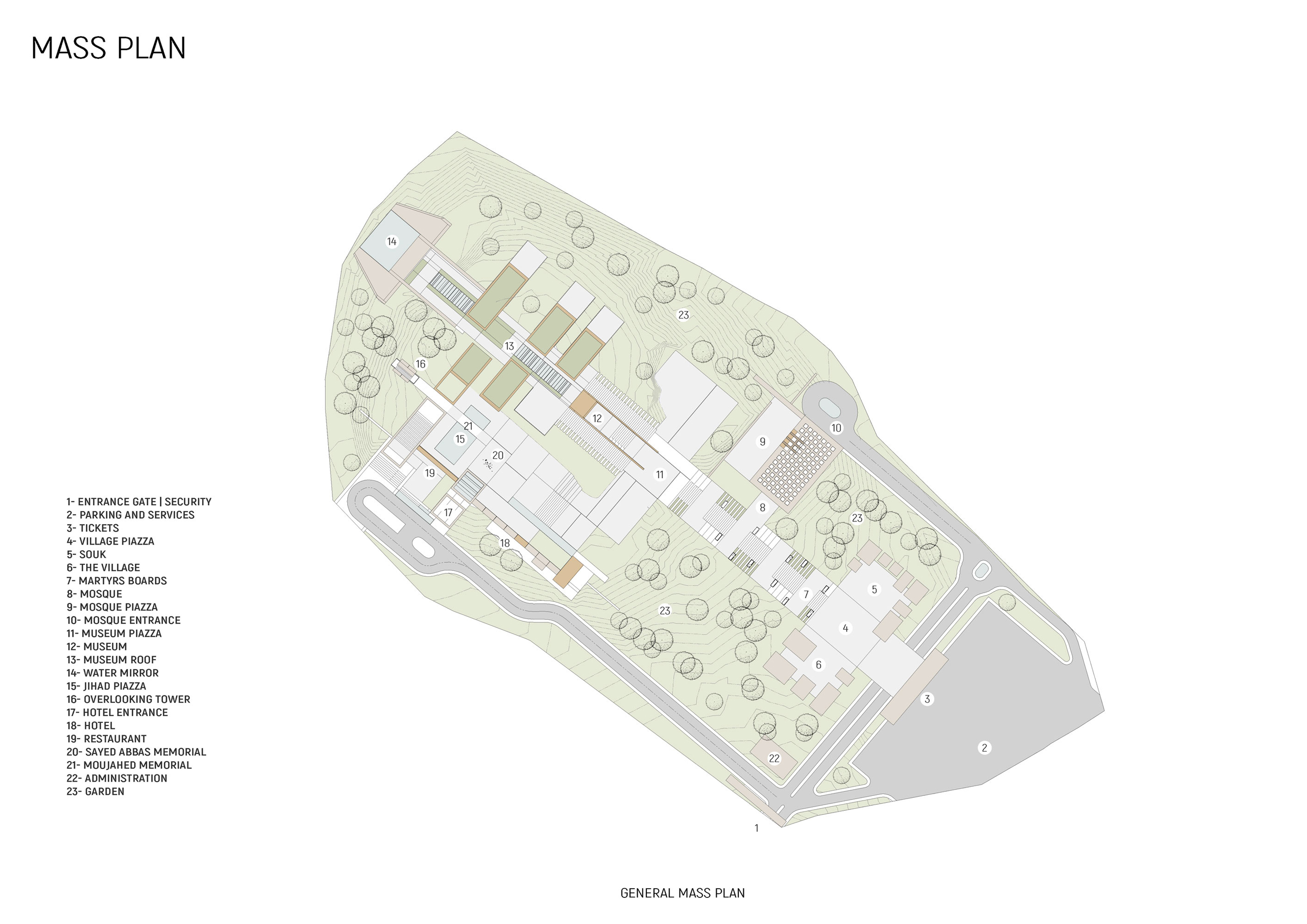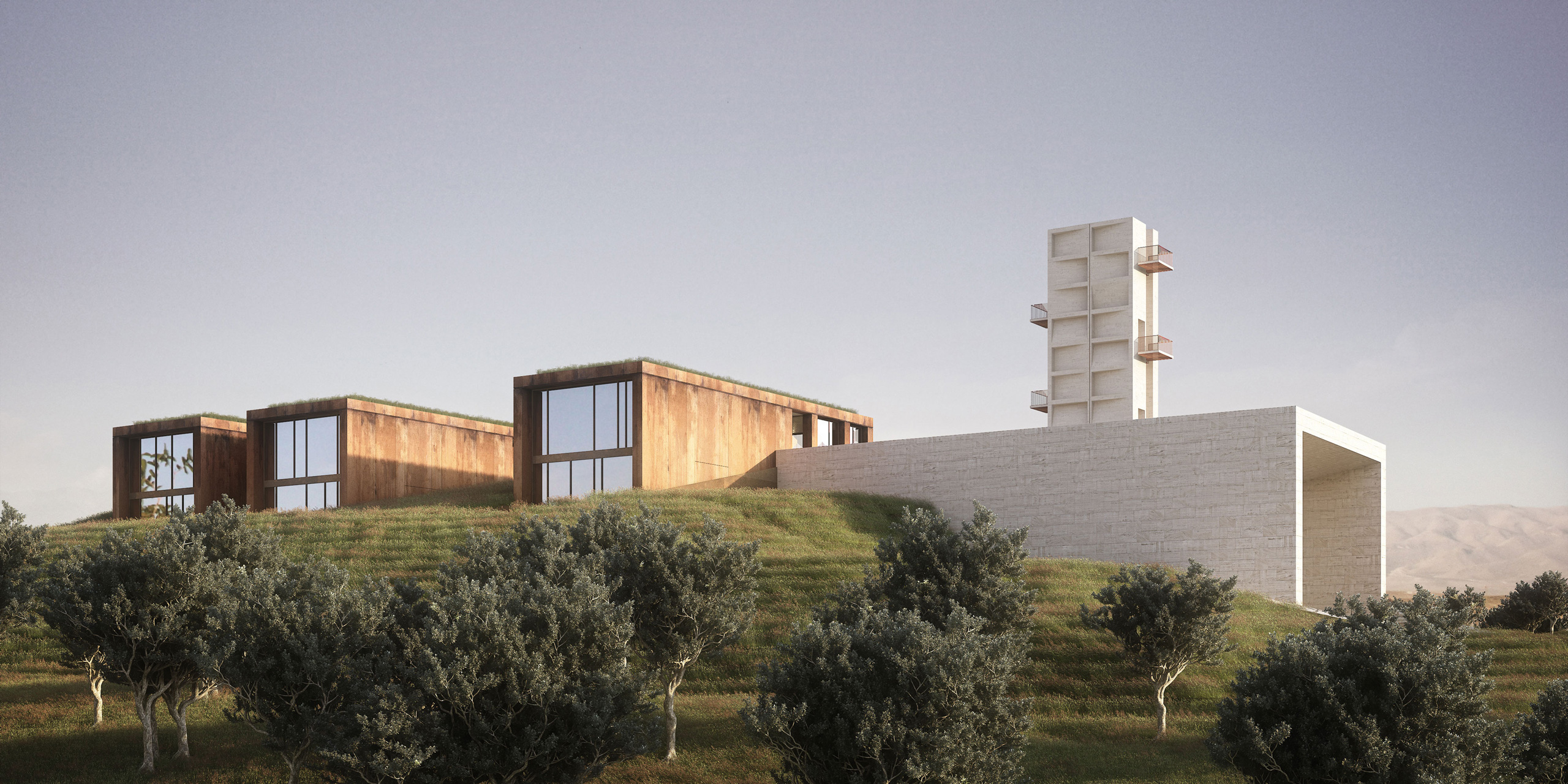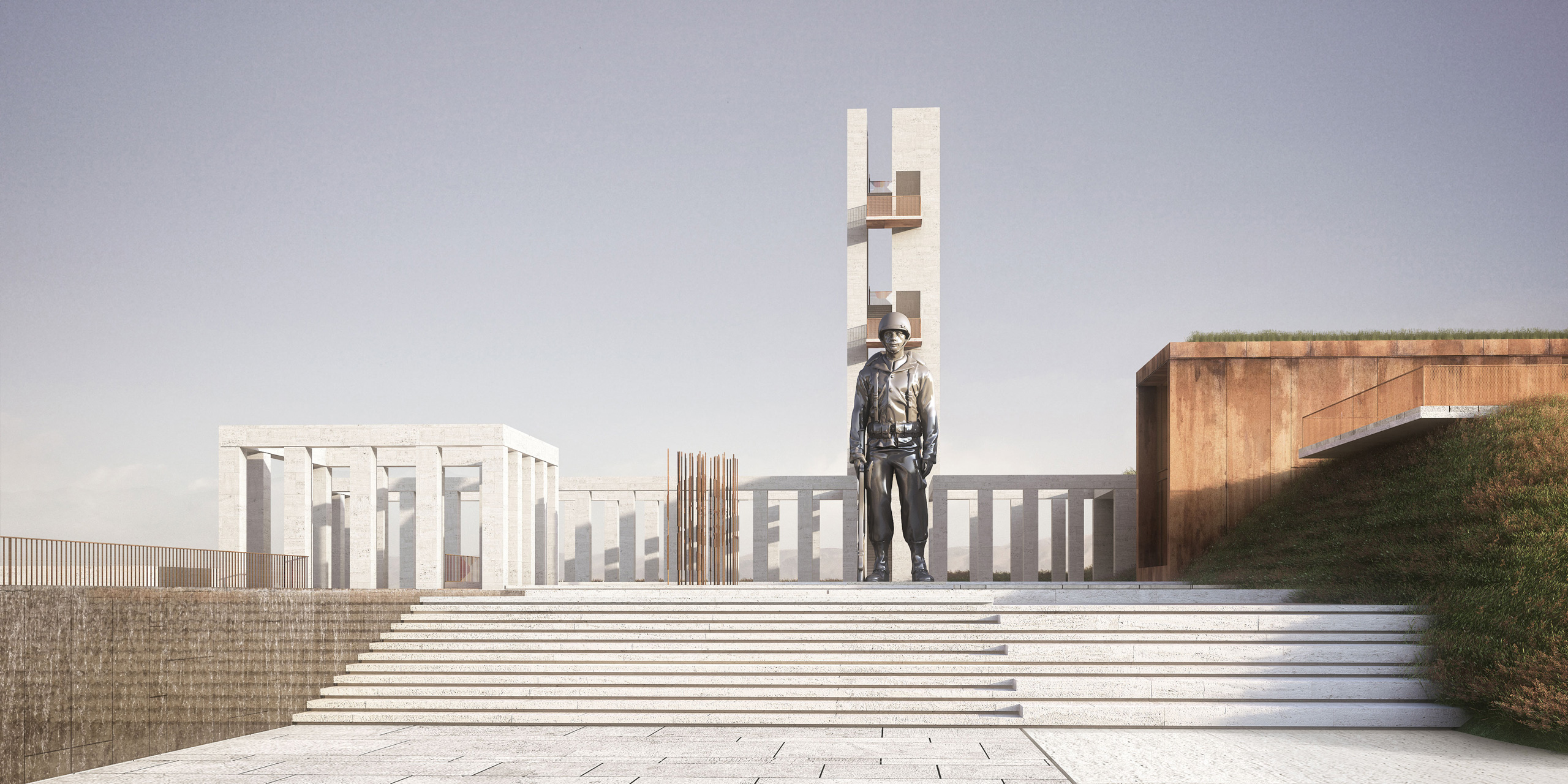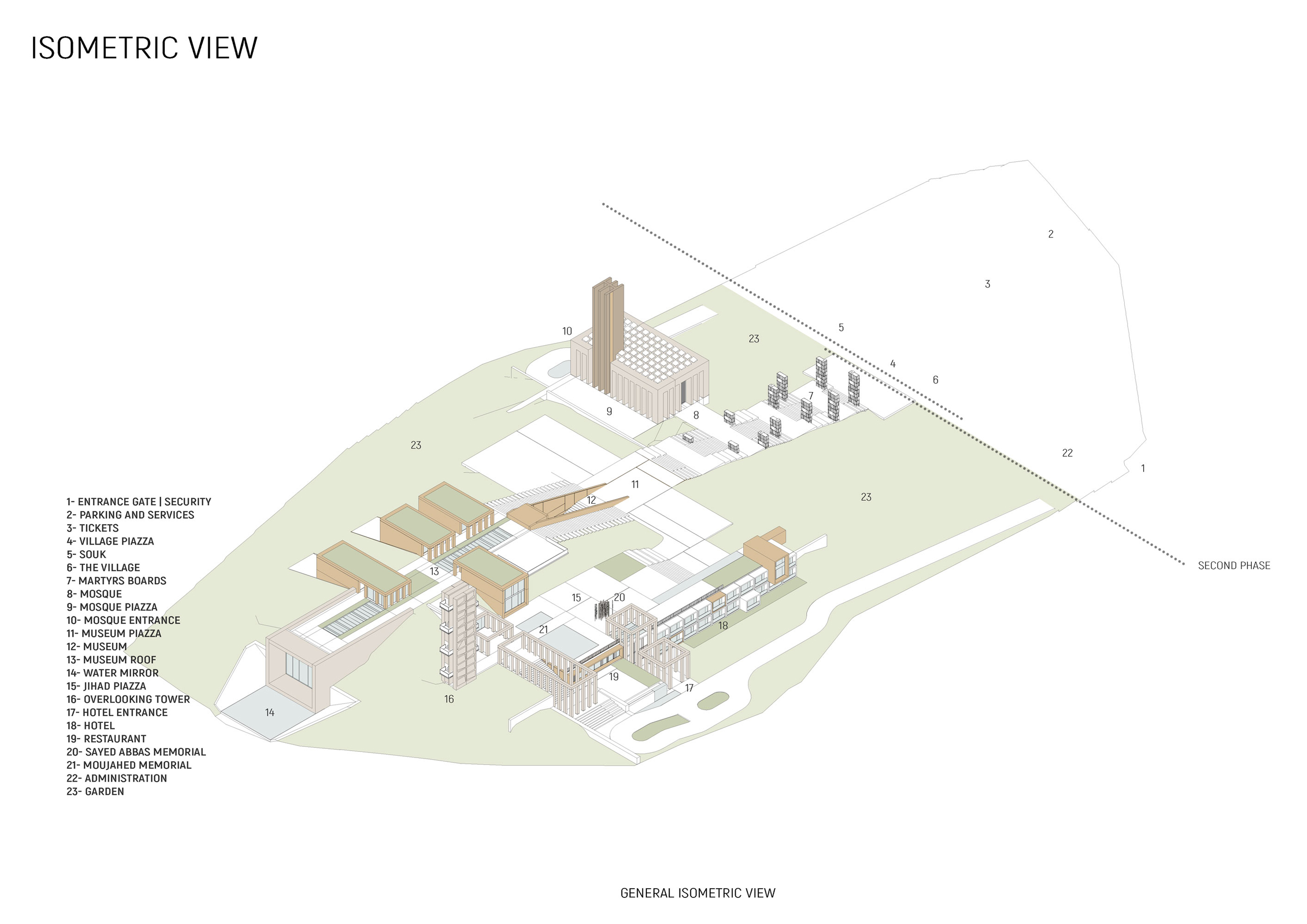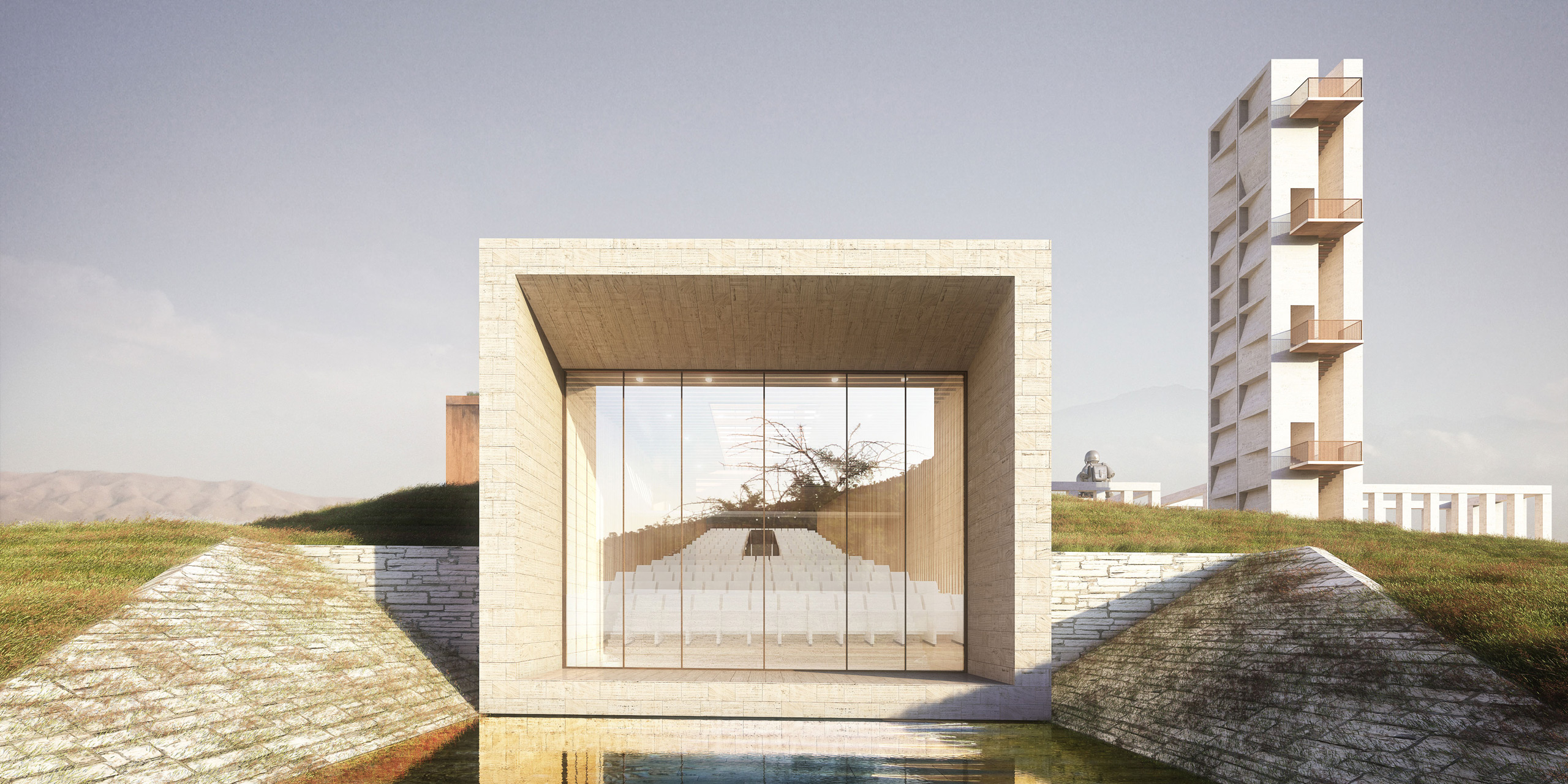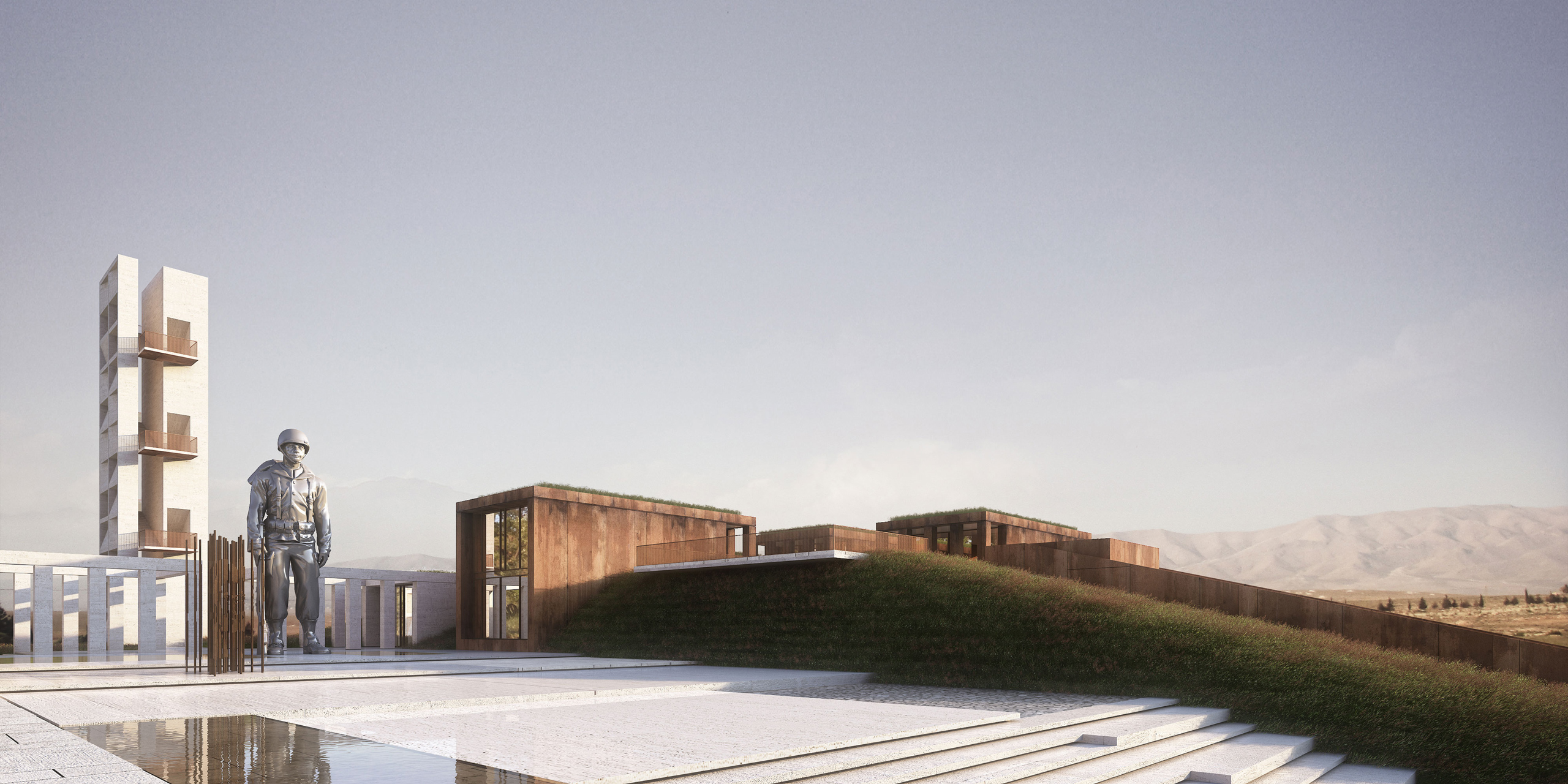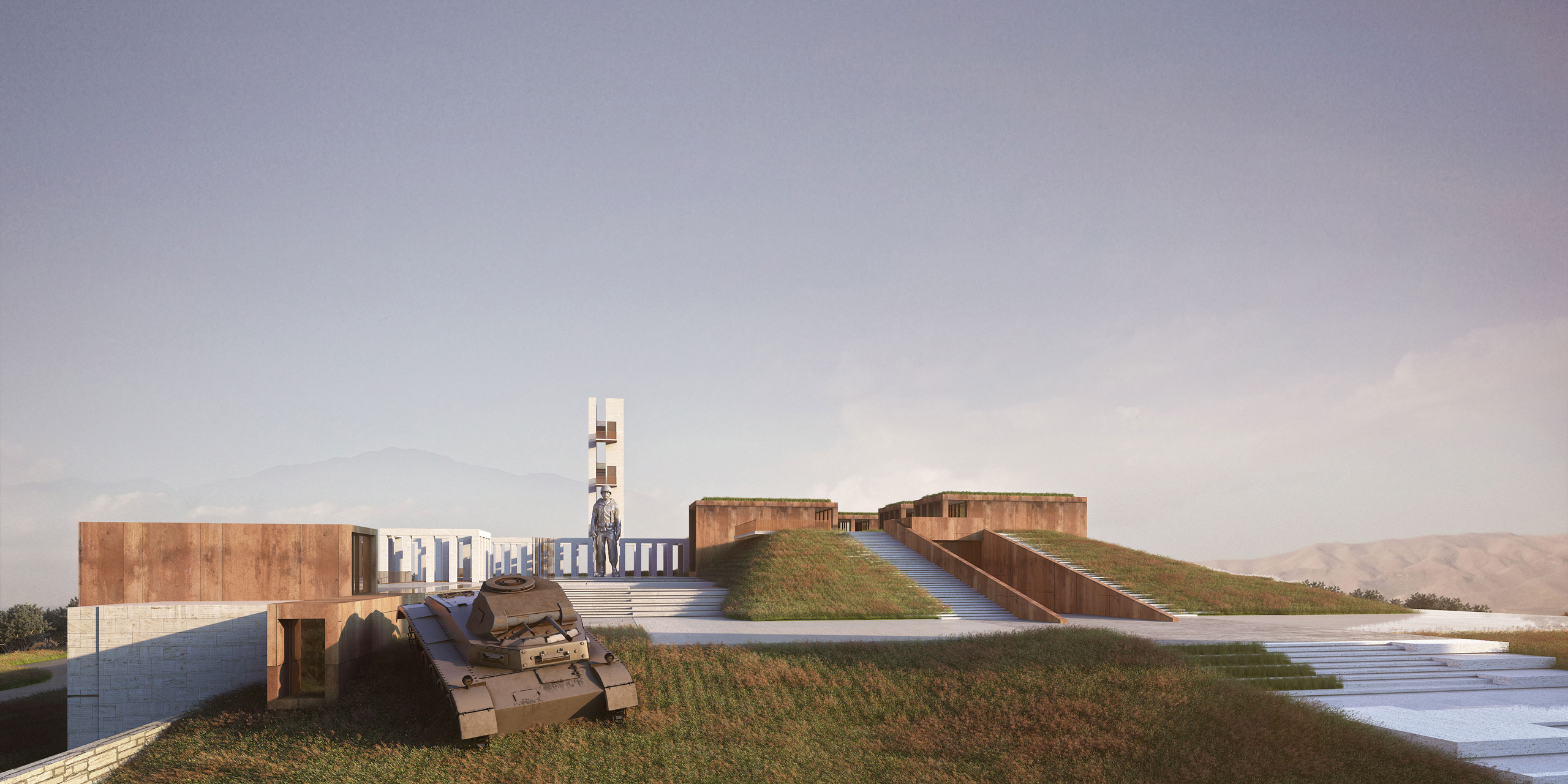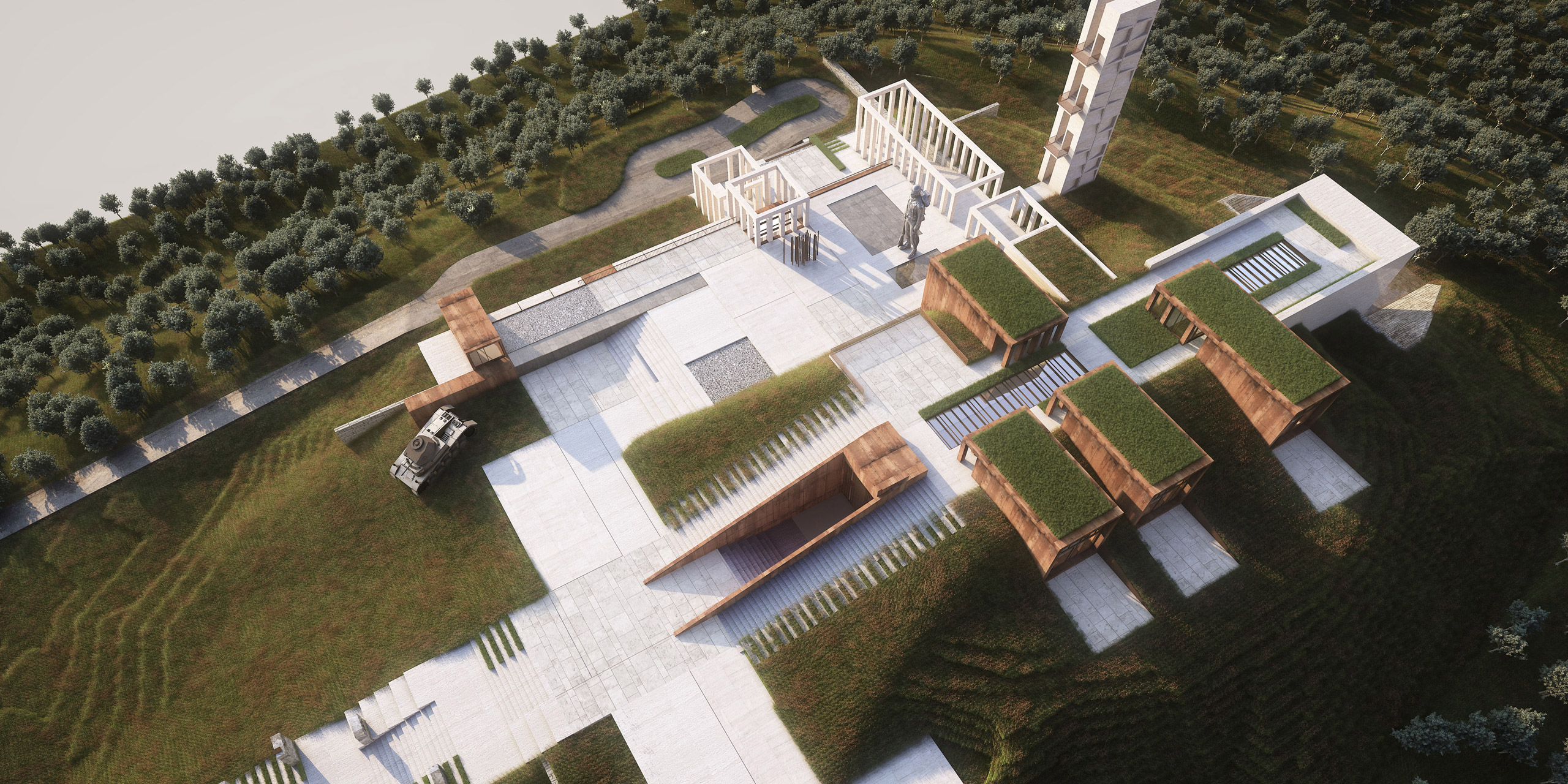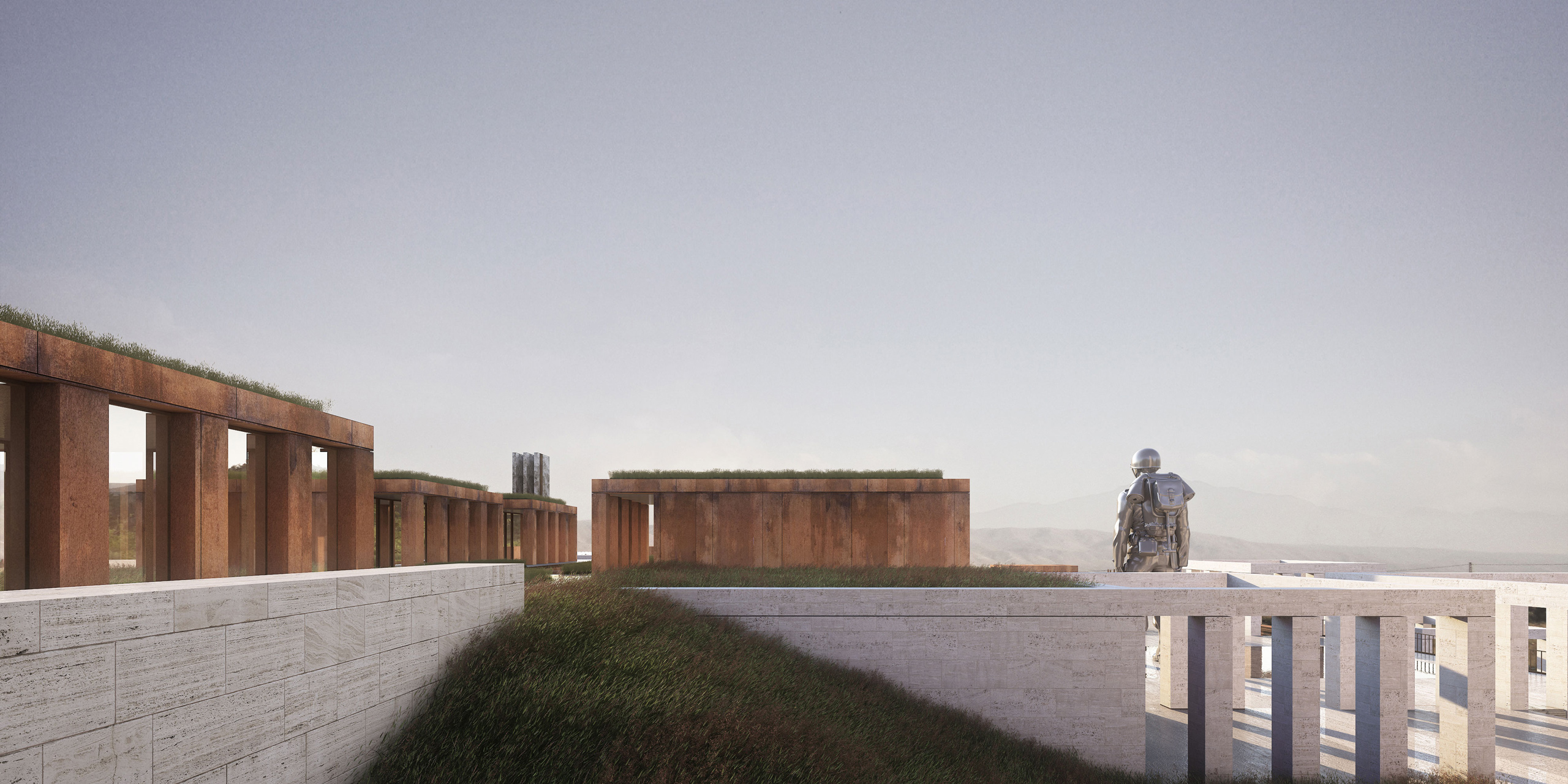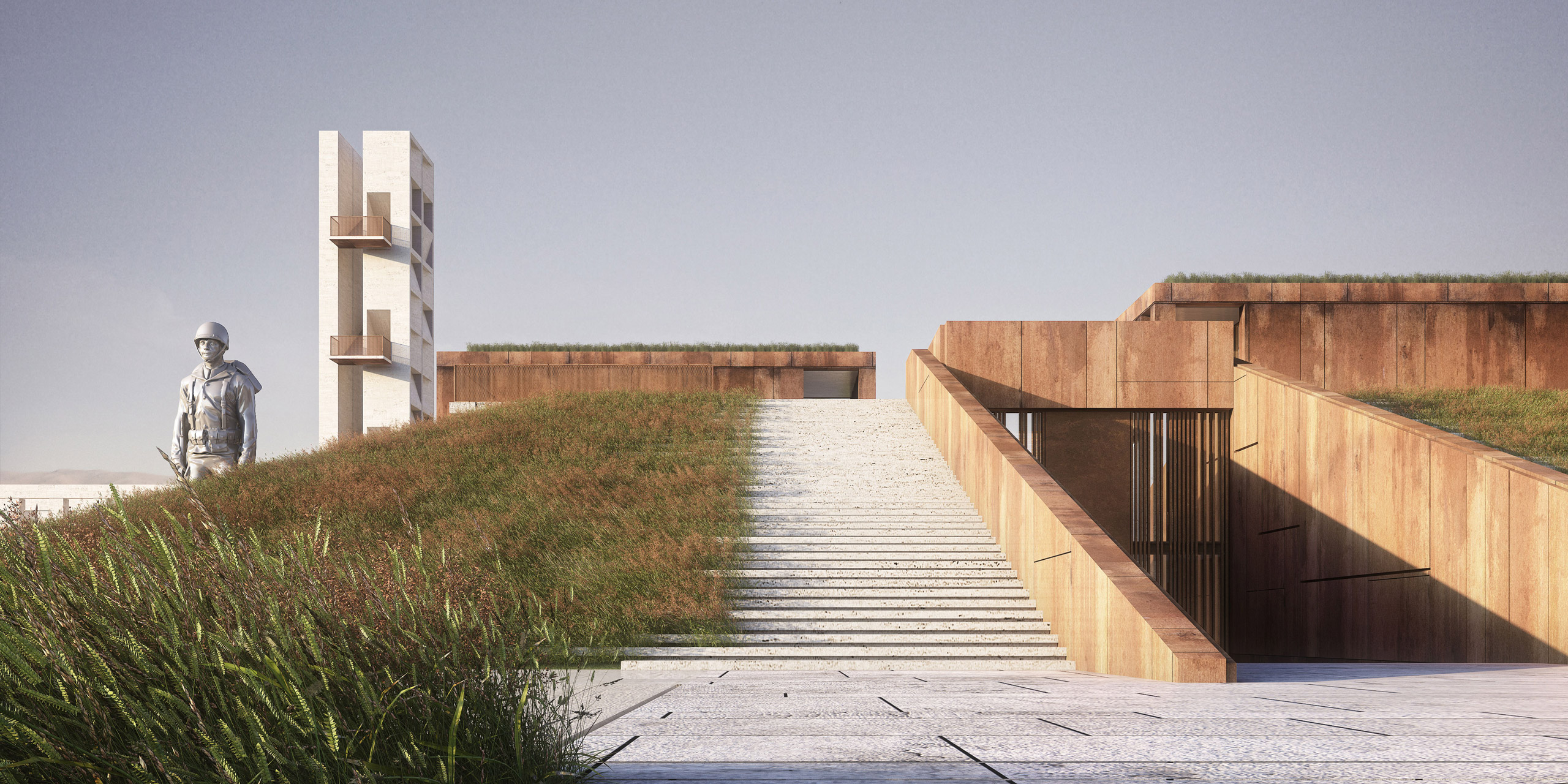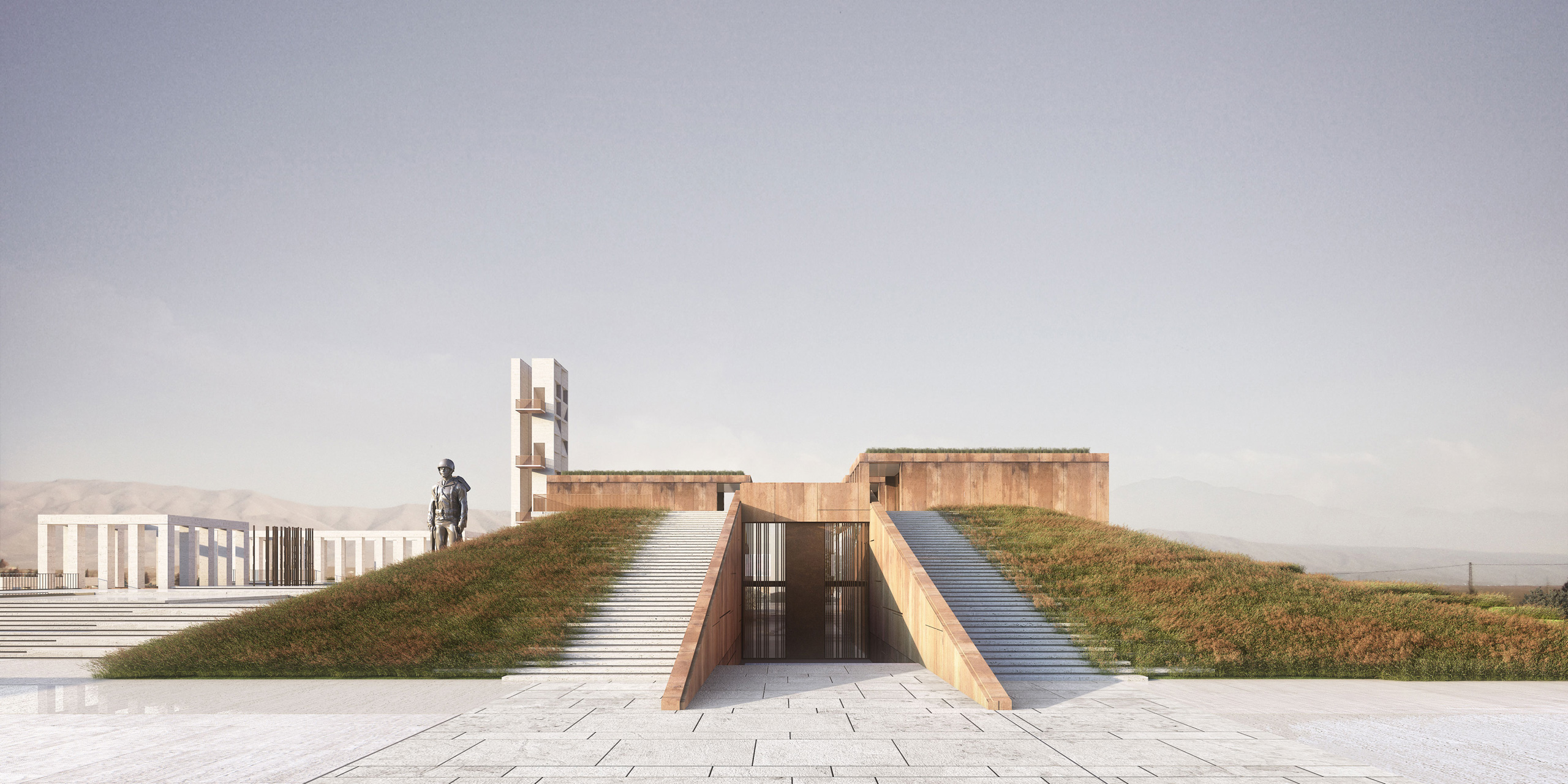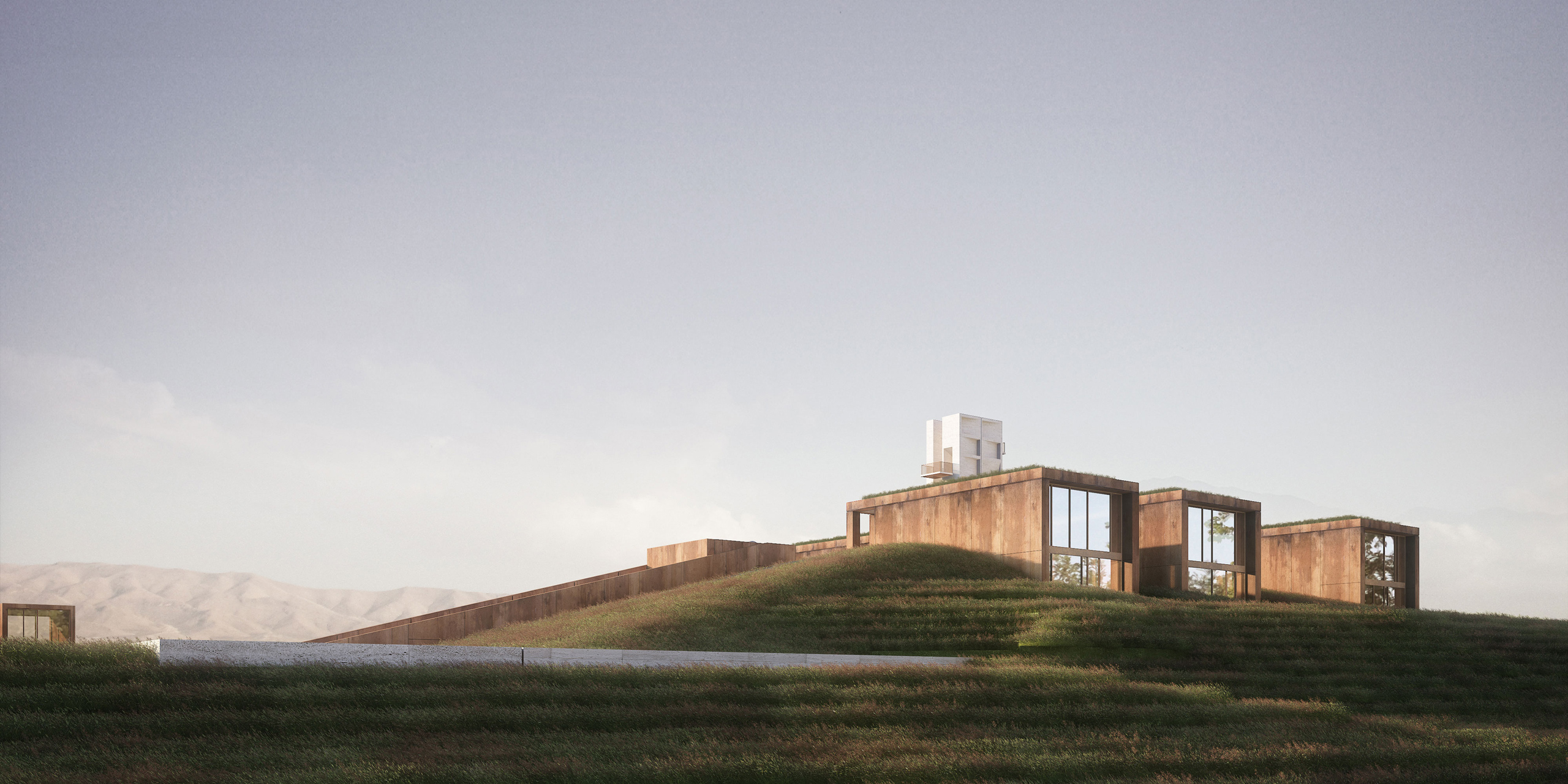
The project narrates the contemporary history of Baalbek and its struggle for liberation from occupation, starting with the support of the people of the region for the liberation movements during the Israeli occupation of southern Lebanon and then their struggle against ISIS
Each city has its history that makes up its DNA. This DNA is the wrapping of events and time together.
The Cave of the Sun is an architectural attempt to shed light on a present-day section of the DNA strip of the city of Baalbek without neglecting the history or ignoring the future. It is a struggle to freeze a segment of the time in its architectural language.
Baalbek (/ˈbɑːlbɛk, ˈbeɪəlbɛk/; Arabic: بعلبك, romanized: Baʿlabakk, Syriac-Aramaic: ܒܥܠܒܟ) is a city located east of the Litani River in Lebanon’s Beqaa Valley, about 67 km (42 mi) northeast of Beirut. It is the capital of Baalbek-Hermel Governorate.
This Phoenician city, where a triad of deities was exalted, was known as Heliopolis (Ἡλιoύπολις, Greek for “Sun City”) during the Hellenistic period. It retained its religious function during Roman times when the sanctuary of the Heliopolitan Jupiter attracted thousands of pilgrims. Baalbek was one of the finest examples of Imperial Roman architecture at its apex.
The Cave of the Sun is in the northeast of Baalbek on a hill overlooking the most precious sites in the city’s history, such as the Roman ruins and the shrine of Khawla. This hill is in the middle of the city’s new urban extension.
. The project includes a museum, a guest house, commercial tourism services, a small mosque, and administrative and technical services.
The project narrates the contemporary history of Baalbek and its struggle for liberation from occupation, starting with the support of the people of the region for the liberation movements during the Israeli occupation of southern Lebanon and then their struggle against ISIS
Also, the project provides a path that tells the story of the city’s emergence and the historical eras it passed through.
In the design of the Cave of the Sun, we relied on values and principles inspired by the diverse urban heritage of the city. The Roman, Islamic, and contemporary architectural icons.
The Cave of the Sun merges with the natural topography of the site. The main volume of the cave penetrates the hill horizontally, scooping underground in the middle of it to move and open to the city at the slope with a large glass facade. The museum volume forms a visual link between the project and the city elements.
The volume is a simple geometric form inspired by the Roman stone quarries; the most famous is the “Pregnant Stone” and the Roman tombs surrounding it.
Corridors and courtyards were added to this block inspired by the style of the Islamic arcades found in the city, the most famous of which is the shrine of Khawla. In addition to its functional role and Islamic inspiration, these arcades give their proportions Roman spirit.
